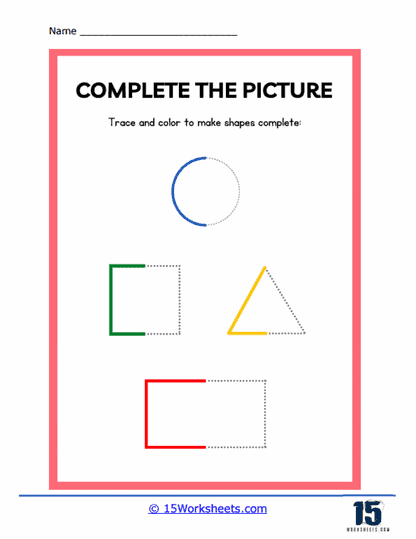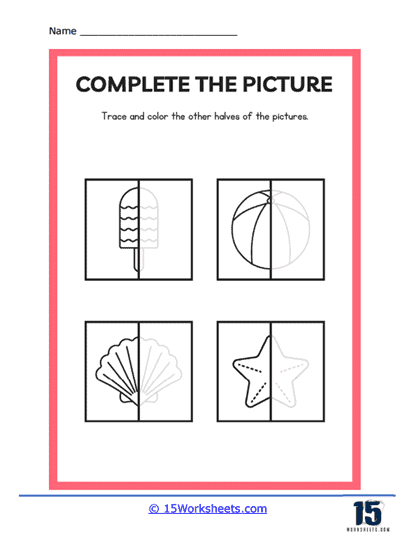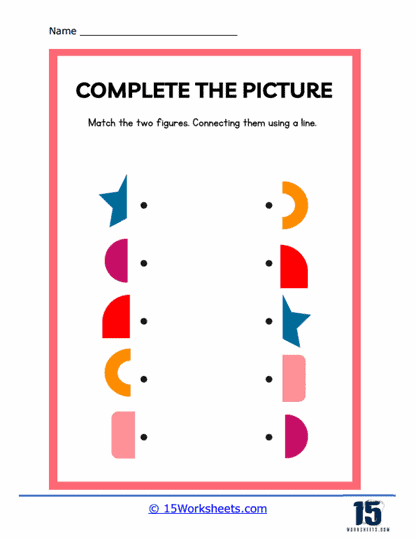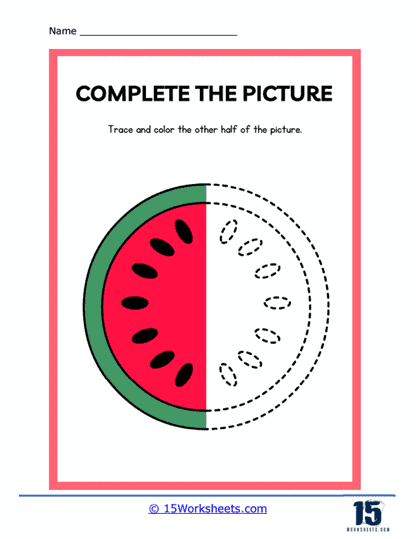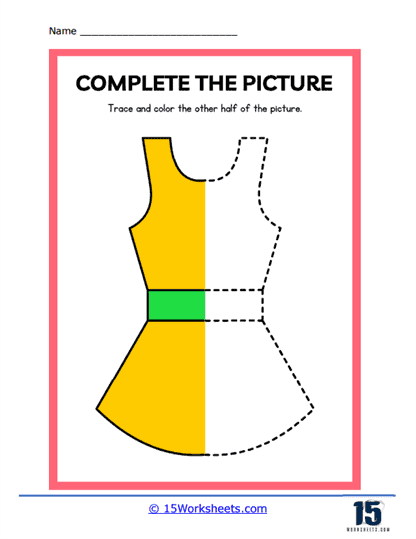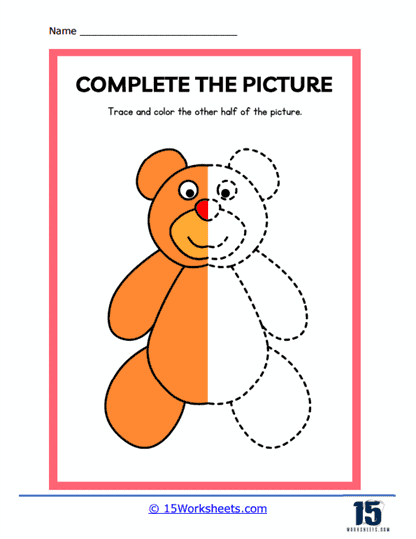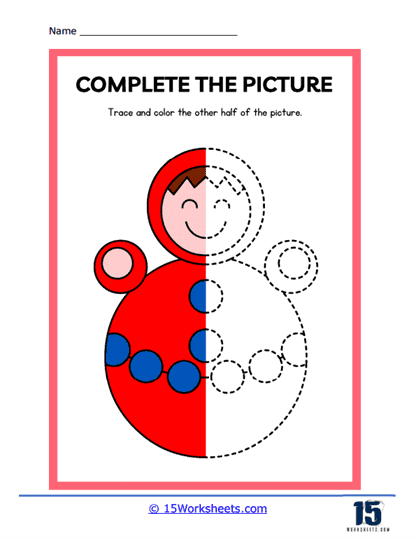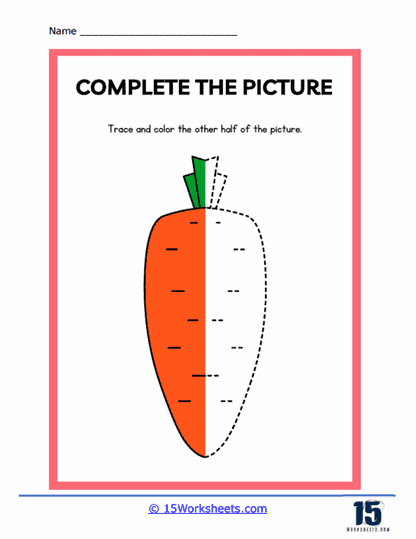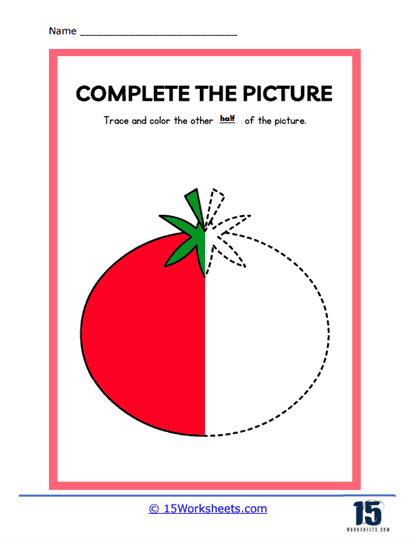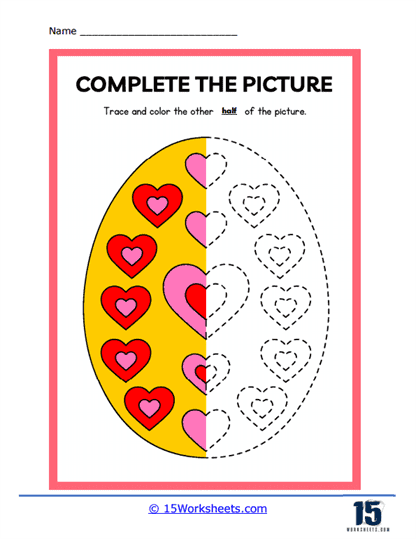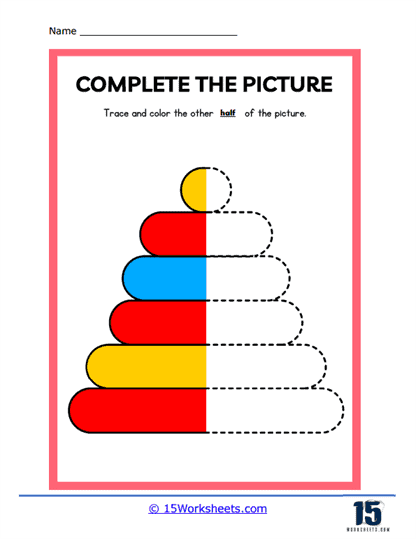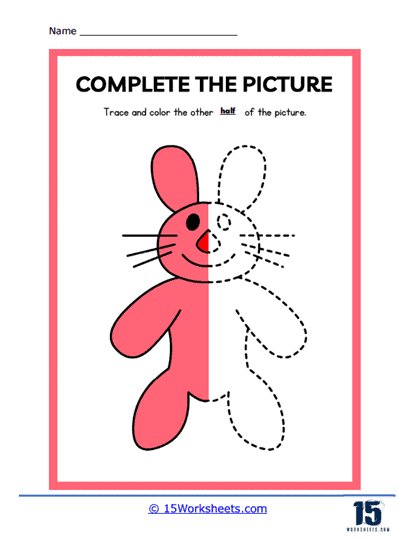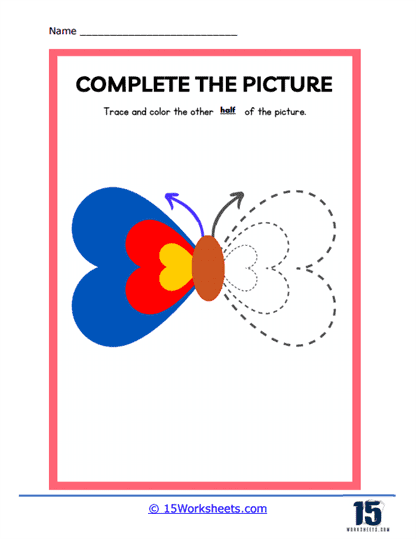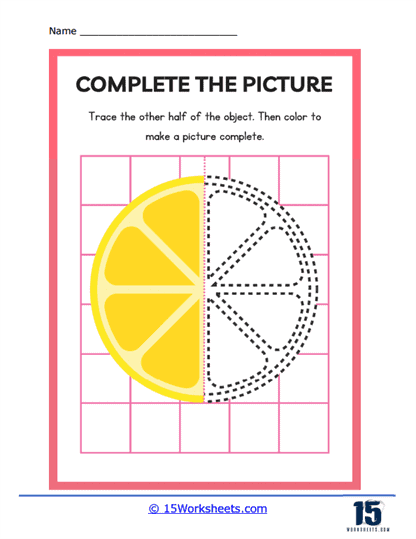Bilateral Coordination Worksheets
All About These Worksheets
Bilateral coordination refers to the ability to use both sides of the body in a coordinated manner. This is a critical skill that underpins many day-to-day activities such as walking, clapping, and using scissors. In the realm of childhood development, it is essential for tasks like tying shoes, buttoning clothes, and even handwriting. Bilateral Coordination Worksheets are specialized tools designed to promote the development of this skill in children. These worksheets consist of activities and exercises tailored to improve coordination, balance, and integration of both body sides.
Types of Exercises on These Worksheets
Symmetrical Activities – These involve using both sides of the body to perform the same action simultaneously.
Example – A worksheet might show two handprints side by side and instruct the child to press both hands onto the prints at the same time.
Teaching Objective: This helps children develop an understanding of symmetry and equal force application with both hands.
Alternating Activities – These activities require the child to alternate movements between the left and right sides.
Example: A diagram of a ladder where a child is instructed to “climb” by moving one hand up, then the other, mimicking an alternating pattern.
Teaching Objective: Enhances rhythmic alternating patterns, which is foundational for tasks like walking or climbing stairs.
Crossing the Midline Activities – These exercises encourage movements where one hand or foot crosses over to the opposite side of the body.
Example: A worksheet with a series of images on one side and a corresponding list of items on the opposite side. Children are instructed to draw lines connecting matching pairs, thereby crossing the midline.
Teaching Objective: These exercises foster the ability to cross the body’s midline, crucial for tasks like reading (moving eyes from left to right) or reaching across the body.
Hand-Eye Coordination Activities – Exercises that challenge children to use their vision and hand movement in a coordinated manner.
Example: A worksheet with dotted lines and patterns that children must trace or a maze that children must navigate.
Teaching Objective: Enhances fine motor skills and the ability to integrate visual input with hand movements. Critical for writing and other precision tasks.
Sequential Activities – These require children to follow a series of movements in a specific order.
Example: A worksheet displaying a sequence of hand or footprints and instructing children to replicate the sequence.
Teaching Objective: Develops sequential processing skills and enhances memory and recall abilities.
Weight-bearing Activities – These activities push children to bear weight on their hands or feet, strengthening their limbs.
Example: A worksheet might show handprints and instruct children to press down hard enough to make a visible print or footprint patterns that encourage kids to stand and balance.
Teaching Objective: Improves strength and balance, which can enhance gross motor skills and overall body coordination.
Bimanual Activities – Tasks that require using both hands simultaneously, but with each hand performing a different function.
Example: A worksheet depicting an image of a jar and a lid separated. The child might be instructed to mimic the action of screwing on a lid using both hands.
Teaching Objective: Develops the ability to perform tasks that require differentiated roles for each hand, like tying shoelaces or playing musical instruments.
Why Are These Exercises Important?
Bilateral coordination is a fundamental developmental skill that impacts various motor abilities and daily tasks. These worksheets provide structured, step-by-step exercises that guide children to hone their bilateral coordination skills. When children can coordinate both sides of their bodies effectively:
Improved Physical Abilities – Activities like sports, dancing, and even simple tasks like running become more fluid and efficient.
Enhanced Cognitive Development – Bilateral coordination is closely linked with brain functions. When both sides of the body work in harmony, it promotes better brain integration, aiding in cognitive tasks.
Boosted Academic Skills – Tasks like writing, reading, or even manipulating tools in science experiments become easier. Children who struggle with bilateral coordination might find it challenging to perform in certain academic tasks.
Increased Independence – Many self-help tasks like dressing, feeding, and grooming require efficient bilateral coordination. Thus, honing this skill promotes independence in children.

